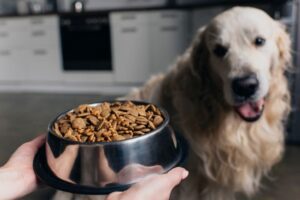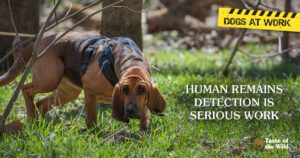Key Takeaways:
- Border Collies are considered the top herding breed due to their intelligence, agility, and natural instinct for livestock control.
- Australian Shepherds are versatile herders known for their high energy levels, loyalty, and ability to adapt to different environments.
- German Shepherds excel in herding tasks with their strong work ethic, protective nature, and keen sense of smell.
- Corgis may be small in size but they have a big impact as herding dogs, thanks to their low stature, agility, and intelligence.
- Australian Cattle Dogs are highly durable and resilient herders that can handle tough terrains while displaying unwavering loyalty.
Are you ready to embark on an exciting journey into the world of herding livestock? Imagine being able to witness the incredible abilities of dogs as they work alongside farmers and ranchers, helping to manage and control large groups of animals. Understanding the top dog breeds for herding livestock is not only fascinating, but it also holds tremendous value in appreciating the symbiotic relationship between humans and animals. By delving into this subject, you'll gain insights into the intelligence, agility, and sheer determination that these canine companions possess. Whether you have a love for animals or simply enjoy learning about different breeds, this topic will captivate your curiosity and leave you with a newfound appreciation for the incredible world of herding dogs. So, let's dive in and discover the 17 top dog breeds for herding livestock!
Popular Dog Breeds for Herding Livestock
When it comes to herding livestock, certain dog breeds have a natural instinct and ability to excel in this task. Some popular dog breeds known for their herding abilities include Border Collies, Australian Shepherds, and German Shepherds. These breeds have been bred and trained for generations to work alongside farmers and ranchers in managing and moving livestock.
Border Collies are highly intelligent and energetic dogs that are often considered the best herding dogs. They have a strong instinct to gather and control livestock, making them excellent at herding sheep or cattle. Australian Shepherds are also highly skilled in herding tasks, known for their agility and versatility. They can adapt to various types of livestock and terrains. German Shepherds, on the other hand, are known for their loyalty and protective nature. They excel at herding large animals like cattle or horses.
The Importance of Herding Livestock for Certain Dog Breeds
For certain dog breeds, herding livestock is not just a job but an essential part of their purpose and fulfillment. These breeds have been specifically bred over centuries with traits that make them exceptional at working alongside farmers and ranchers in managing livestock.
Herding provides these dogs with mental stimulation, physical exercise, and a sense of purpose. It allows them to use their natural instincts in a productive way while forming a strong bond with their human partners. Without the opportunity to engage in herding activities, these dogs may become bored or frustrated.
How Herding Dogs Help Farmers and Ranchers with Livestock
Herding dogs play a crucial role in assisting farmers and ranchers with the management of their livestock. With their innate herding instincts and training, these dogs help gather, move, and control livestock in an efficient and orderly manner.
By working closely with their human partners, herding dogs can navigate through fields or pastures to guide animals to desired locations. They can help separate specific animals from the herd, prevent livestock from straying or getting into dangerous situations, and even assist in loading or unloading animals during transportation.
A Common Dog Breed for Herding Sheep
One of the most common dog breeds used for herding sheep is the Border Collie. Border Collies are highly regarded for their exceptional herding abilities and are often referred to as the "sheepdog" breed. Their intelligence, agility, and natural instincts make them well-suited for managing and controlling sheep.
Border Collies have a unique style of herding known as "eye" herding. This means they use their intense gaze and body language to control the movement of sheep. They are able to anticipate the behavior of sheep and make quick adjustments to ensure the flock stays together and moves in the desired direction.
Skills and Traits Needed for Dogs to Herd Livestock
To be successful at herding livestock, dogs need a combination of skills and traits that enable them to effectively communicate with both the animals they are herding and their human handlers. Some important skills and traits include:
- Intelligence: Herding dogs must be able to quickly understand commands and problem-solve in various situations.
- Agility: Dogs need to be nimble and quick on their feet in order to navigate through different terrains alongside livestock.
- Obedience: It is crucial for herding dogs to listen and respond promptly to commands from their human handlers.
- Endurance: Herding livestock can be physically demanding, so dogs need to have the stamina to work for extended periods of time.
- Strong herding instinct: Dogs should have a natural inclination and desire to gather, control, and move livestock.
Commands and Signals Used by Herding Dogs to Control Livestock
Herding dogs rely on a set of commands and signals to communicate with both their human handlers and the livestock they are herding. These commands and signals help guide the animals in specific directions or actions. Some common commands used by herding dogs include:
- "Come bye" or "away": These commands instruct the dog to circle around the livestock in a clockwise or counterclockwise direction.
- "Lie down" or "steady": The dog is told to crouch down low or slow down its pace, allowing for better control over the livestock's movement.
- "Walk up" or "get out": These commands prompt the dog to move closer to the livestock or create distance between them, respectively.
- "Stop" or "stay": The dog is instructed to halt its movement and hold its position until further directions are given.
Communication Between Herding Dogs and Their Owners on Farms or Ranches
The communication between herding dogs and their owners on farms or ranches is built on trust, understanding, and a shared language of commands and signals. Through consistent training and working together, a strong bond is formed between these working pairs.
Owners use verbal cues, hand gestures, whistles, or even body movements to convey instructions to their dogs. The dogs carefully observe their owners' cues and respond accordingly. This effective communication allows for seamless coordination between the dog, owner, and livestock, resulting in efficient herding operations.
Popular Dog Breeds for Herding Livestock
Australian Cattle Dog
The Australian Cattle Dog, also known as the Blue Heeler, is a popular breed for herding livestock. These dogs are known for their intelligence, agility, and strong work ethic. With their high energy levels and natural instinct to nip at the heels of animals, they excel at moving cattle and other livestock.
Border Collie
The Border Collie is another highly regarded breed when it comes to herding livestock. Renowned for their exceptional intelligence and intense focus, Border Collies have an innate ability to control the movement of sheep or other animals with precision. Their natural herding instincts combined with their athleticism make them a top choice for farmers and ranchers.
The Importance of Herding Livestock for Certain Dog Breeds
For certain dog breeds like the Australian Cattle Dog and Border Collie, herding livestock is not just a job but an essential part of their nature. These breeds have been selectively bred over generations to possess the skills needed to effectively manage and control livestock. Their ability to gather, drive, and protect animals is crucial in ensuring the safety and productivity of farms and ranches.
Herding livestock provides these dogs with a sense of purpose and fulfillment. It allows them to utilize their natural instincts while working closely with humans. The partnership between these breeds and farmers or ranchers is built on trust, communication, and mutual respect.
How Herding Dogs Help Farmers and Ranchers with Livestock
Herding dogs play a vital role in assisting farmers and ranchers with managing their livestock. Their primary task is to move animals from one location to another efficiently while maintaining order within the herd. By using their natural herding instincts and following commands from their owners, these dogs can guide livestock through pastures, into pens, or onto trailers.
Additionally, herding dogs help farmers and ranchers in separating specific animals from the herd for various purposes such as medical treatment, sorting, or loading onto trucks. Their presence alone often acts as a deterrent to predators, protecting the livestock from potential harm. The assistance provided by these skilled dogs saves time and effort for farmers and ranchers while ensuring the well-being of their animals.
A Common Dog Breed for Herding Sheep
The Border Collie is widely recognized as one of the most common dog breeds used for herding sheep. Their exceptional intelligence, agility, and intense focus make them highly effective in managing sheep flocks. With their keen eye for movement and ability to anticipate the behavior of sheep, Border Collies can control large groups of sheep with ease.
These dogs use a combination of physical presence, barking, and controlled movements to guide sheep in desired directions. They are capable of adapting their approach based on the temperament and responsiveness of individual sheep. The Border Collie's natural instinct to gather and drive makes them an invaluable asset when it comes to herding sheep efficiently.
Skills and Traits Needed for Dogs to Herd Livestock
Dogs that excel at herding livestock possess specific skills and traits that enable them to perform their duties effectively. These include:
- Intelligence: Herding dogs need to be quick learners with excellent problem-solving abilities.
- Agility: They must be physically agile to navigate various terrains while keeping up with fast-moving livestock.
- Endurance: The ability to work for extended periods without tiring is crucial for herding dogs.
- Strong Work Ethic: Dogs used for herding must have a strong desire to work and please their owners.
- Natural Instincts: Certain breeds have inherent herding instincts that make them more suitable for this role.
Commands and Signals Used by Herding Dogs to Control Livestock
Herding dogs rely on a set of commands and signals from their owners to control the movement of livestock. These commands are typically given through verbal cues or hand signals, allowing the dogs to understand what actions are required. Some common commands used in herding include:
- "Come By": This command instructs the dog to move counterclockwise around the livestock, approaching from the left side.
- "Away to Me": The opposite of "Come By," this command directs the dog to move clockwise around the animals, approaching from the right side.
- "Steady": This command tells the dog to slow down and maintain a steady pace while herding.
- "Lie Down": When given this command, the dog should lie down and remain still until instructed otherwise.
Communication Between Herding Dogs and Their Owners on Farms or Ranches
The communication between herding dogs and their owners on farms or ranches is a remarkable partnership built on trust and understanding. Through years of training and working together, these teams develop a unique bond that allows them to communicate effectively without words.
Dogs rely on visual cues from their owners, such as body movements and hand signals, to understand what is expected of them. Likewise, owners learn to interpret the dog's behavior, body language, and barks to assess the situation and provide appropriate commands. This non-verbal communication is essential in guiding livestock and coordinating actions between the dog and its owner.
In conclusion, there are many dog breeds that are great at herding livestock. Some of the top breeds include Border Collies, Australian Shepherds, and German Shepherds. These dogs have the intelligence and skills needed to help farmers and ranchers manage their livestock effectively.
What dogs are good for herding cattle?
If you prefer a widely recognized breed that was specifically bred to herd animals such as sheep and cattle over long distances, you might consider getting a German Shepherd (which is one of Ree's favorites!) or a Collie. Our list also includes many other lesser-known or rare dog breeds, such as Canaans and Berger Picards.
How many dog breeds are in the herding group?
Currently, there are 30 different breeds included in the Herding Group. These breeds vary in size, with some being as small as the Corgi and others as large as the German Shepherd Dog.
What two dog breeds were bred to herd cattle?
The corgi, Shetland Sheepdog, Finnish Lapphund, and Australian Cattle Dogs are all excellent breeds of cattle dogs. The Bearded Collie is particularly well-known as a cattle dog. These dogs have been essential for herding cattle for thousands of years.
What breed is a good cattle dog?
Working stock dogs, such as Border Collies, Australian Kelpies, Catahoulas, Curs, Australian Cattle Dogs, Australian Shepherds, and mixed-breed dogs, play a crucial role in managing cattle.
What is the smartest cattle dog?
The Australian Cattle Dog, also called the Queensland Heeler or Blue Heeler, is a resilient and intelligent herding dog. Although they are highly intelligent, they can be stubborn and difficult to train at times due to their independent nature.
What is the easiest herding dog?
Australian Shepherds are highly intelligent and agile, making them excellent herding dogs and companions. They are easily trained and have a friendly and adaptable nature, getting along well with people and animals they encounter.

















